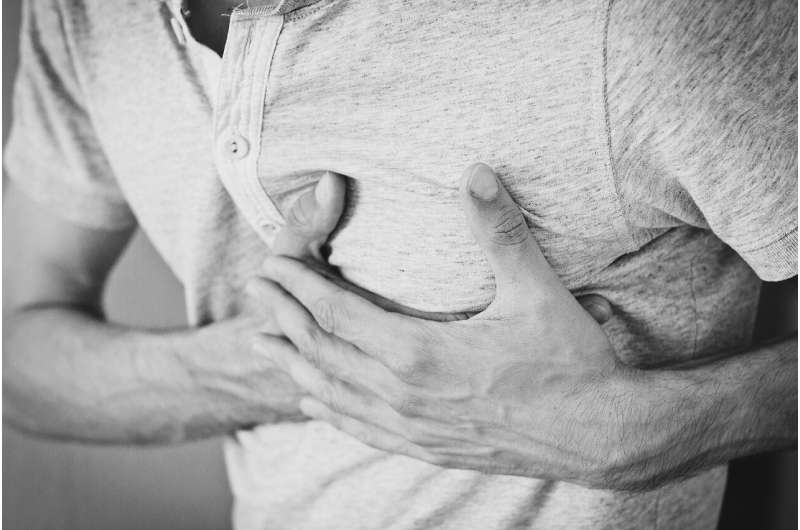Socioeconomic status impacts risk of hospital readmission and death following a heart attack

People living in disadvantaged areas are at increased risk of readmission to hospital and death after a heart attack coinciding with treatment disparities, a new Australian study has found.
Researchers from the Baker Heart and Diabetes Institute found socioeconomic disadvantage was an important factor when it comes to treatment gaps, with socioeconomic disadvantage associated with both less intensive in-patient treatment and poorer outcomes.
This is particularly concerning given that illness and death following a cardiovascular event is already high, with more than 60% of people readmitted to hospital in the year following a heart attack.
The study, published in the Journal of Epidemiology and Community Health, evaluated variation in treatment for and outcomes following a heart attack, by diabetes status, sex, and socioeconomic disadvantage.
It looked at all people over 30 years who were discharged from hospital following a heart attack between 1 July 2012 and 30 June 2017 in Victoria, which equated to more than 43,000 people.
The researchers assessed receipt of in-patient procedures and discharge dispensing of cardioprotective medications for each heart attack admission, as well as 1-year readmission rates for all causes, cardiovascular causes, and another heart attack, as well as 1-year all-cause mortality.
People with diabetes are already known to be at increased risk of readmission and death following a heart attack, and reassuringly, the study showed this excess risk is reflected by more intensive treatment, providing an endorsement of Australia's healthcare system. However, the same could not be said for people living in more disadvantaged areas.
First author and Ph.D. student Jedidiah Morton said the study showed people living in lower socioeconomic areas were also at higher risk of readmission and death following a heart attack but were less likely than those in less disadvantaged areas to receive in-patient procedures for heart attack, although they had higher rates of medication receipt.
He said this disparity likely reflected inequality of care and was the most concerning finding in this study, as it was indicative of undertreatment that is not based on risk.
While concerning, it is unfortunately not a novel finding. Morton said healthcare inequity by socioeconomic status in general, and for heart attack specifically, was common even in countries like Australia with "universal" healthcare systems.
"It's also important we try to understand these disparities in healthcare provision and outcomes, as any differences can lead us to discover potentially modifiable factors that can be targeted for prevention," Morton said. "This might include underlying biases that impact treatment or access to services in different areas.
"This study raised important questions about health equity and the need to do better for Australians living in more disadvantaged areas."
More information: Jedidiah I Morton et al, Treatment gaps, 1-year readmission and mortality following myocardial infarction by diabetes status, sex and socioeconomic disadvantage, Journal of Epidemiology and Community Health (2022). DOI: 10.1136/jech-2021-218042




















